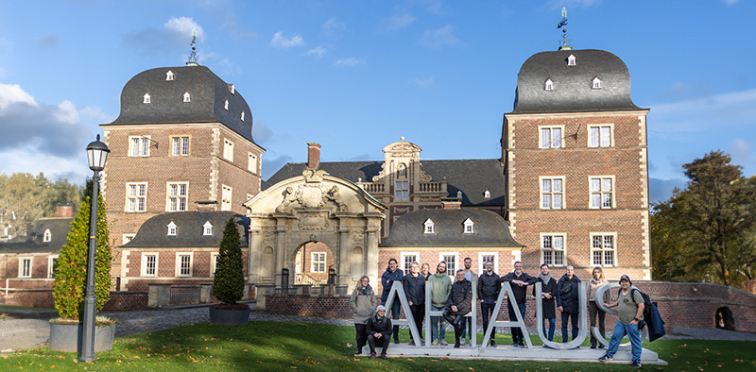DMDZ research group visits Ahaus

Ahaus in western Münsterland: around 10 km to the Dutch border, just under 40,000 inhabitants, surrounded by nature reserves, lots of greenery and a beautiful baroque castle in the middle of the city center. The expectation of a Westphalian idyll that arises on the drive along country roads and through farming communities from Münster is fulfilled with flying colors by the digital city of Ahaus. Wait - digital city? You read that right. That's how the medium-sized town describes itself. So it was only natural that we paid a visit to Ahaus with our research group at the beginning of November and took a look around.
We were welcomed in the morning at the local software manufacturer Tobit, where Thomas Spieker, CDO of the city, gave us an informative presentation on current projects, plans and challenges in the field of digitalization. In addition to infrastructural topics such as climate and energy dashboards or the real-time monitoring of visitor numbers and parking space utilization in the city centre, we were able to discuss the organization and status of administrative digitization in Ahaus with him.
Afterwards, we took the opportunity for a short internal research group workshop on the topic of digitization definitions in preparation for future publications. In the afternoon, we were introduced to urban digitization projects by the company Tobit during a city tour. The company operates various digital "showcases" in the city center, from digital bike and rowing boat rentals to a self-service supermarket that operates without a cash register or staff - open 24/7 thanks to access and payment options via app.
We took away lots of exciting ideas and questions that are directly linked to our research projects: What does digitalization actually involve in detail? How can digitalization projects be implemented on site? What influence does the constellation of economic, administrative and political players in the city have? Who digitizes what? And: how does the implementation actually serve the quality of life of citizens in the end and what risks need to be considered and dealt with?
Our visit to Ahaus showed us once again: The close link between theory and practice in our research project brings us very close to the pressing questions, opportunities and problems of the digital medium-sized city of the future. Many thanks to the city of Ahaus, Thomas Spieker and the company Tobit for the exciting insights!


